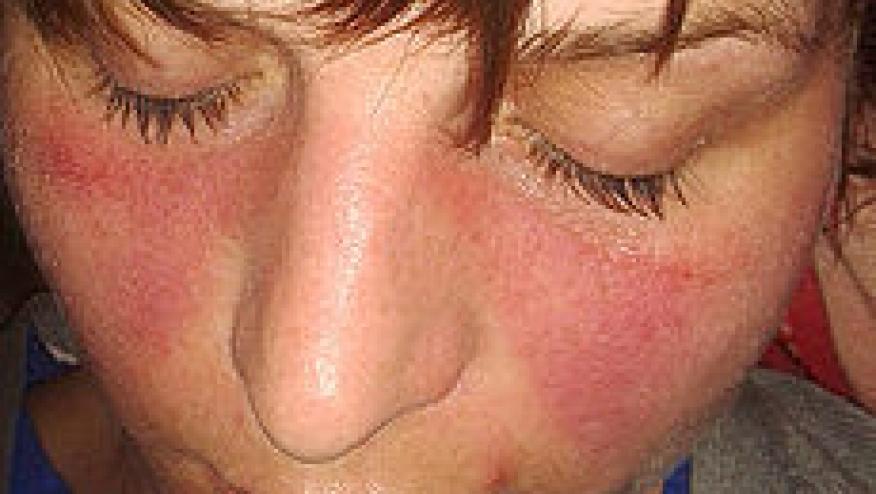2023 EULAR Lupus Management Recommendations Save

EULAR has published updated recommendations for the management of systemic lupus erythematosus (SLE) based on new evidence and expert opinion - formulationg five overarching principles and 13 recommendations.
A multinational international Task Force included 35 rheumatologists, five nephrologists and two patient representatives. Systematic literature reviews were performed (January 2018–December 2022), leading to final statements that were subjected to a predefined voting process. Please consult the journal article for levels of evidence and strengths of recommendation.
These management recommendations focus on the use of hydroxychloroquine (HCQ), glucocorticoids (GC), immunosuppressive drugs (ISDs) (including methotrexate, mycophenolate, azathioprine, cyclophosphamide (CYC)), calcineurin inhibitors (CNIs, cyclosporine, tacrolimus, voclosporin) and biologics (belimumab, anifrolumab, rituximab). Also advice is also provided on treatment strategies and targets of therapy, assessment of response, combination and sequential therapies, and tapering of therapy. HCQ is recommended for all lupus patients (target dose 5 mg/kg real body weight/day) and GC are used as ‘bridging therapy’ during periods of disease activity.
Updated specific recommendations are also provided for cutaneous, neuropsychiatric and haematological disease, SLE-associated antiphospholipid syndrome, kidney protection, as well as preventative measures for infections, osteoporosis, cardiovascular disease.
Overarching Principles
- SLE requires multidisciplinary, individualised management with patient education and shared decision-making, taking into consideration the costs to patient and society.
- SLE disease activity should be assessed at each clinic visit (the frequency depending on physician’s discretion), with evaluation of organ damage (at least annually), using validated instruments.
- Non-pharmacological interventions, including sun protection, smoking cessation, healthy, balanced diet, regular exercise and measures to promote bone health are important to improve long-term outcomes
- Pharmacological interventions are directed by patient characteristics, type and severity of organ involvement, treatment-related harms, comorbidities, risk for progressive organ damage, and patient preferences.
- Early SLE diagnosis (including serological assessment), regular screening for organ involvement (especially nephritis), prompt initiation of treatment aiming at remission (or low disease activity if remission is not possible) and strict adherence to treatment are essential to prevent flares and organ damage, improve prognosis and enhance quality of life.
Recommendations
- Hydroxychloroquine is recommended for all patients (1b/A), unless contraindicated, at a target dose of 5 mg/kg real body weight/day (2b/B) but individualised based on risk for flare (2b/B) and retinal toxicity.
- Glucocorticoids, if needed, are dosed based on the type and severity of organ involvement (2b/C), and should be reduced to maintenance dose of ≤5 mg/day (prednisone equivalent) (2a/B) and, when possible, withdrawn; in patients with moderate-to-severe disease, pulses of intravenous methylprednisolone (125–1000 mg/day, for 1–3 days) (3b/C) can be considered.
- In patients not responding to hydroxychloroquine (alone or in combination with glucocorticoids) or patients unable to reduce glucocorticoids below doses acceptable for chronic use, addition of immunomodulating/immunosuppressive agents (eg, methotrexate (1b/B), azathioprine (2b/C) or mycophenolate (2a/B)) and/or biological agents (eg, belimumab (1a/A) or anifrolumab (1a/A)) should be considered.
- In patients with organ-threatening or life-threatening disease, intravenous cyclophosphamide (2b/C) should be considered; in refractory cases, rituximab (2b/C) may be considered.
- Treatment of active skin disease should include topical agents (glucocorticoids, calcineurin inhibitors) (2b/B), antimalarials (hydroxychloroquine, chloroquine) (1a/A), and/or systemic glucocorticoids (4/C) as needed, with methotrexate (1b/B), mycophenolate (4/C), anifrolumab (1a/A), or belimumab (1a/B) considered as second-line therapy.
- In active neuropsychiatric disease attributed to SLE, glucocorticoids and immunosuppressive agents for inflammatory manifestations (1b/A) and antiplatelet agents/anticoagulants for atherothrombotic/aPL-related manifestations (2b/C) should be considered.
- For acute treatment of severe autoimmune thrombocytopenia, high-dose glucocorticoids (including pulses of intravenous methylprednisolone) (4/C), with or without intravenous immunoglobulin G (4/C), and/or rituximab (2b/B), and/or high-dose intravenous cyclophosphamide (4/C), followed by maintenance therapy with rituximab (2b/B), azathioprine (2b/C), mycophenolate (2b/C), or cyclosporine (4/C) should be considered.
- Patients with active proliferative lupus nephritis should receive low-dose (EuroLupus) intravenous cyclophosphamide (1a/A) or mycophenolate (1a/A) and glucocorticoids (pulses of intravenous methylprednisolone followed by lower oral doses); combination therapy with belimumab (either with cyclophosphamide or mycophenolate (1b/A)) or calcineurin inhibitors (especially voclosporin or tacrolimus, combined with mycophenolate, 1b/A) should be considered.
- Following renal response, treatment of lupus nephritis should continue for at least 3 years (2b/B); patients initially treated with mycophenolate alone or in combination with belimumab or a calcineurin inhibitor should remain on these drugs (1a/A), whereas azathioprine or mycophenolate should replace cyclophosphamide for those initially treated with cyclophosphamide alone (1a/A) or in combination with belimumab
- In patients at high-risk for renal failure (defined as reduced GFR, histological presence of cellular crescents or fibrinoid necrosis, or severe interstitial inflammation), high-dose (NIH regimen) intravenous cyclophosphamide (1a/A) in combination with pulse intravenous methylprednisolone, can be considered.
- In patients with SLE achieving sustained remission, gradual tapering of treatment should be considered, with withdrawal of glucocorticoids first (2a/B).
- SLE associated with thrombotic antiphospholipid syndrome (APS) should be managed with long-term vitamin K antagonists after the first arterial or unprovoked venous thrombotic event (1b/B); low dose aspirin (75–100 mg/day) should be considered in patients with SLE without APS but with high-risk aPL profile
- Immunisations for the prevention of infections (herpes zoster virus, human papillomavirus, influenza, COVID-19 and pneumococcus), management of bone health, nephroprotection and cardiovascular risk, and screening for malignancies, should be performed










If you are a health practitioner, you may Login/Register to comment.
Due to the nature of these comment forums, only health practitioners are allowed to comment at this time.